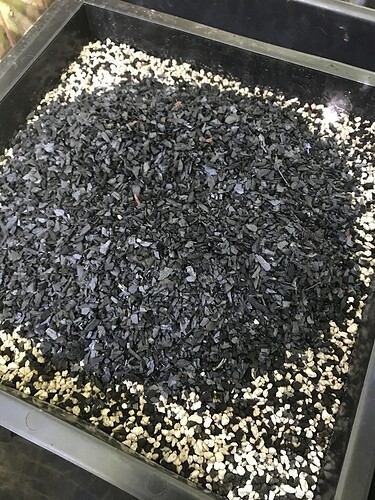I thought this review might be of interest to urban bonsai practitioners:
Does anyone have experience with biochar?
I recall that Peter Warren mentioned doing some tests with it but I have not heard any results.
Has Ryan mentioned it in his investigations into soil science?
I heard the UK head of research for Davey Trees discuss using biochar in Queen’s Park, London to rescue trees suffering from London pollution. I have wondered if trees suffering smoke damage from west coast fires might benefit from similar treatment.
Biochar is the way of the future (and the past) for agriculture in general, and is gaining in horticultural use it seems to this newbie.
I have been a pretty neglectful yardiculturist for years, but am working biochar into both my yard and my bonsai soils. I can’t say for sure yet, but my yard has never been better…but I also bombarded it with gypsum, humic/fulvic acids, hydrolysates and fish fertilizer. In fact, it is quite apparent that the combination was an absolute miracle for the soil structure and root zone health. It’s a jungle of healthy growth and the soil now has loft to it.
Many people have incorporated horticultural charcoal (essentially biochar) into bonsai soil mixes form a long time to increase CEC, encourage microbial growth and moisture retention.
I have just found a supplier locally and hope to hear from them when they have restocked.
I have been concerned about particle size. Have you screened your biochar to get a reasonable particle size or are you concerned about the dust?
I saw one website where they were moistening the biochar before spreading it on fields to cut down on the dust.
The yard application was superfine dust mixed in with liquid fertilizer.
For the bonsai, I crushed my own from cowboy charcoal and screened to > 1/16 and < 1/4.
Here is the material before mixing it with the scoria and pumice. I am trying to pre-load the charcoal and pumice with nutrients before mixing with composted bark or Akadama, or both for potting season.
The charcoal is what I had on hand… and straight bio chat is not that easy to get ahold of.
What is your source and what is it made from?
http://www.canadianagrichar.com
They mention both ‘natural raw wood sources’ and ‘feedstock’ on their website.
The FAQ page seems to have answers.
I read about pre-loading in a worm bin but this firm suggests using compost.
They make it from hazelnut husks here in NW Oregon, among other things. Wood waste is just composted for the most part. They will call it hemlock or pine, but it is almost always Douglas fir even if labeled otherwise.
